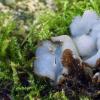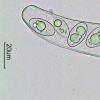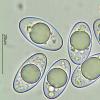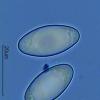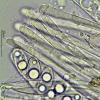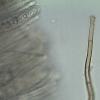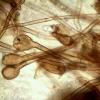
16-08-2014 20:57
 Rubén Martínez-Gil
Rubén Martínez-Gil
Hola a todos. Subo unas fotos de una especie que

13-08-2014 18:45
Paul CannonHello everyoneYou might be interested in this spec

15-08-2014 08:38
Hi to all,someone, please, have this paper:A Revis

12-08-2014 16:59
Steve ClementsHi,Im helping to lead a long-term fugal survey of

Hola a todos.
Subo unas fotos de una especie que encontramos ayer sobre musgo a orillas de un riachuelo.
Miden 1 cm de diámetro y de color blanco-grisáceo.
Esporas lisas, gutuladas, de 22-25 x 11,5-12,5 micras.
Ascas operculadas, pleurorrincas, de 210-230 x 20-30 micras.
Pelos de excípulo hasta 600 micras (igual más).
¿Qué les parece?
Gracias por sus respuestas.
Rubén
Vous trouverez, via votre moteur de recherche, une clé du genre que je propose, avec les dessins d'ascospores
René

Pues sí, gracias René.
Le vi pelos en excípulo y sólo pensé en Trichophaea.... no me vino a la cabeza el género Geopora.
Gracias.
Saludos
Rubén

